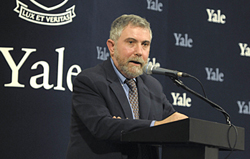Graphene Membranes May Lead To Enhanced Natural Gas Production, Less CO2 Pollution, Says CU Study
Engineering faculty and students at the University of Colorado Boulder have produced the first experimental results showing that atomically thin graphene membranes with tiny pores can effectively and efficiently separate gas molecules through size-selective sieving.
The findings are a significant step toward the realization of more energy-efficient membranes for natural gas production and for reducing carbon dioxide emissions from power plant exhaust pipes.
Mechanical engineering professors Scott Bunch and John Pellegrino co-authored a paper in Nature Nanotechnology with graduate students Steven Koenig and Luda Wang detailing the experiments. The paper was published Oct. 7 in the journal’s online edition. (more…)

